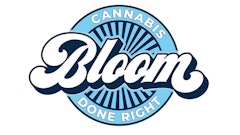
California is the largest—and arguably most competitive—cannabis market in the United States. Its decades long cannabis history makes it a long-standing market leader in cannabis production and sales, and this has led to an overage of supply in a market that has a proportionally small number of retail outlets. This supply imbalance has created fierce competition among brands fighting for shelf space, and the largest and most capitalized brands often muscle their way in through pay-to-play and race-to-the-bottom pricing tactics.
How can a small- to medium-sized brand compete in an environment with low margins and limited financial resources? The key is in strategic market positioning and brand differentiation. Here are a few tips to consider as you navigate the retail landscape and vie to win a coveted seat on dispensary shelves.
1. Focus on a Niche Target Market
The largest and most well-resourced brands tend to dominate segments of the shelf that generate the highest sales volume. Although a unique brand and product strategy can certainly help you penetrate the high barrier to entry on the shelf, your chances of success are slim if you cannot compete on pricing and promotion. Low prices with aggressive promotions, budtender incentives, and paid placement tend to win the high-volume game in California. So, if you can’t outcompete the leading brands, then under-compete them.
To effectively under-compete, you must think about niche audience segments and highly differentiated product offerings. For example, if the largest brands in the vape category are selling cheap distillate cartridges with mass-market components and generic packaging, maybe you can focus on something more unique and specialized–like an organically grown, full spectrum cartridge with beautifully designed, sustainable packaging that caters to the health and wellness market (think yoga moms!). Admittedly, this, too, is a tough path to follow, but at least you will have a more unique story to share with buyers, budtenders and consumers. Heaven forbid that you show up at a dispensary with another undifferentiated distillate cart that is not competitively priced—that is a quick way to hit a wall of silence. So, your job is to create a product and brand story that sets yourself apart and captures attention. And in a crowded marketplace, this is often accomplished by targeting a niche market and demonstrating that your brand has a laser-focused and active following.
2. Spend Time in the Field
One thing that most brand owners fail to do is spend time in the field visiting retail stores. Your sales reps and brand ambassadors are usually your frontline staffers, but are they the ones making decisions about your merchandising strategy and packaging design? Often, decision-makers sit behind a desk and don’t have a good sense of what retail shelves look like in terms of available space, merchandising displays, competing brands, customer traffic flow, etc. Understanding these factors is critical in terms of knowing how your brand might best stand out on a shelf. For example, when assessing the competitive landscape, look at packaging colors, styles, sizes, form factors, logo design, etc. Take these insights into consideration as you develop your design and market positioning strategy.
You should also be aware of how brands in your category are displayed. Some products are placed in a glass display case, sit back on a shelf, hang from a hook or sit in a refrigerated case. Other times a store has premium placements in high traffic/visibility areas. Get a sense of how and where your products might best fit into this landscape, and this could give you the edge you need to stand out from the competition.
3. Strategically Focus on Select Retail Stores
If you operate in a state like California that has a very diverse population, then you shouldn’t assume every store is a right fit for your brand. Demographic and psychographic profiles vary greatly by geographic location, so you should spend time understanding each market and selecting the ones that contain the consumer purchasing behavior that is most congruent with your brand. For example, if your brand focuses on high-priced craft cannabis, then a regional market that primarily consists of price-sensitive frugal shoppers may not be the best fit. This approach will ensure that the hard work you do to get on shelves pays off by being relevantly positioned among brands that may not have as much staying power.
A primary way to keep your brand on a retail shelf is to have strong customer affinity and sales velocity. If your brand resonates with the customer preferences of a given retail store, then you will have a more distinguished presence than brands that might be misplaced or less relevant to that audience. Focusing on select retail stores also enables you to offer greater brand support to your accounts. The larger and more well-established brands tend to cast a broader net to maximize market penetration. If your strategy is to under-compete, then you should shoot for depth, not breadth. This means working more closely with fewer accounts, instead of spreading yourself thin and providing a shallow level of support to a greater number of accounts.
So, your playbook should be to:
- spend more time with each account;
- get to know the buyers and budtender staff really well (e.g., show them love, praise their efforts, reward their support);
- strategically work with retail managers to SKU target, increase sales velocity, and dial in your shelf placement; and
- develop meaningful customer relationships through deeper in-store engagement with your brand ambassadors.
This approach is also a more efficient and strategic way to utilize your limited sales and marketing resources.
4. Build Consumer Demand and Engagement
Many brands rely on retailers to develop and manage consumer relationships. As a result, buyers and budtenders are the people who most influence consumer purchasing behavior. If you successfully manage to get your products on a retail shelf, then that achievement may be short-lived if budtenders ignore your brand and recommend the competition.
.png?auto=format%2Ccompress&fit=max&q=70&w=400)
Your job is to constantly make sure that your brand is top of mind for your budtenders; however, this approach has the downside of putting your brand’s destiny in someone else’s hands. So, it is equally important for you to create consumer demand by directly engaging your end customers. Use social media and other marketing channels to build brand awareness and educate consumers about the benefits of your products. By delighting your customers, adding value to their lives, and developing meaningful relationships, you can turn an indifferent cannabis consumer into an outspoken advocate for your brand. Retailers love it when brands help to drive traffic and conversion, so by investing in direct-to-consumer marketing, you will ensure that your brand is distinguished in the minds of both consumers and retailers.
Claudio Miranda is the co-founder and CEO of Guild Enterprises, a brand management company that oversees a family of cannabis brands including award-winning concentrates producer Guild Extracts.


























